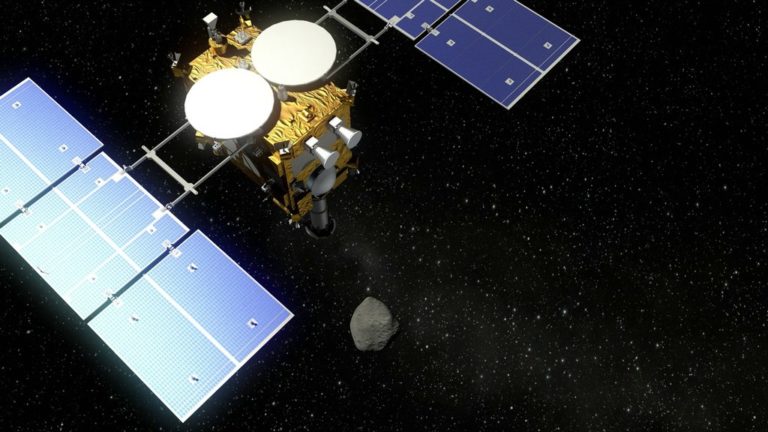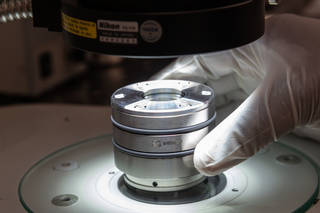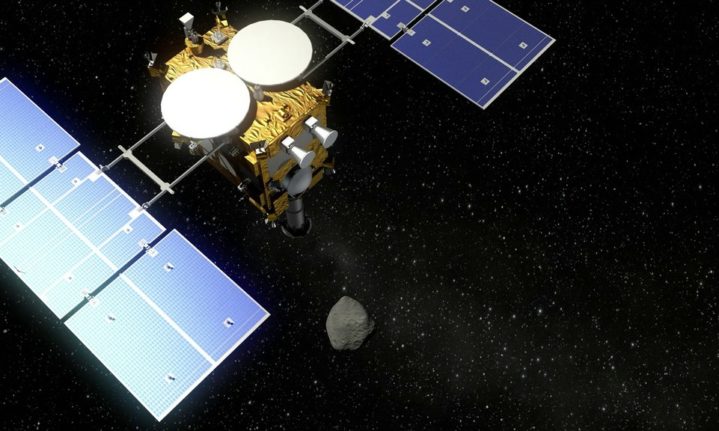Hayabusa2, Japan’s asteroid sample return mission, delivered the first sub-surface samples delivered from an asteroid after a 5 billion-km journey on Sunday 19 November, which could provide clues to the origin of our planet.

Hayabusa2. Picture: Deutsches Zentrum für Luft/ Wikimedia Commons.
The Hayabusa2 spacecraft was launched into space in 2014, until it eventually rendezvoused in space with near-Earth asteroid 162173 Ryugu on 27 June 2018. It landed back on earth in the Australian outback.
162173 Ryugu is estimated to be 900 metres in diameter according to the Japanese Aerospace Exploration Agency (JAXA), where it orbits the sun between Earth and Mars, occasionally crossing Earths orbit. Because of this phenomenon, the asteroid is classified as ‘potentially dangerous,’ though it poses no imminent danger to earth.
Hayabusa2 surveyed the asteroid for a year and a half after it touched down on the asteroid in June 2018, where it returned the first sub-surface samples of an asteroid to earth in December 2020.
On the morning of 19 December, the capsule briefly turned into a fireball as it re-entered the earth’s atmosphere 120 km above the earth, creating a streak of visible light over Southern Australia.
Hayabusa2 asteroid Ryugu sample return capsule landed in Australia. JAXA says recovery teams at Woomera, have estimated the landing location. This is the capsule’s fireball streaks captured across night sky during re-entry https://t.co/mY2PBH0r9k [more: https://t.co/LIvr92oz95] pic.twitter.com/ApAC4Z2gSj
— Massimo (@Rainmaker1973) December 5, 2020
It was collected from its landing site at 9 am 500km North of Adelaide, where it was taken to Woomera Test Range to undergo a preliminary safety inspection before being taken to Japan next week.
Scientists believe this finding to be successful, as this asteroid could be an example of what struck early earth to deliver the water and organic materials that make our planet habitable.

Hayabusa 2 Sample Receipt at the Johnson Space Centre, including the opening of cases by JAXA guests.Picture: NASA/ Robert Markowitz
Space rock expert from Australia’s National University Trevor Ireland, told ABC News that this rock is as significant as the Murchison meteorite that fell to earth more than 50 years ago, which was found to contain simple amino acids and abundant water.
‘We will examine whether Ryugu is a potential source of organic matter and water on Earth when the solar system was forming,’ Ireland told ABC.
Preliminary results published in the scientific journal Nature which has so far only confirmed that the physical and chemical properties were not altered during the capsules return from the asteroid.
Hayabusa2’s mission has now been extended until 2023, where it will rendevous with a small, rapidly rotating asteroid, 1998 KY2.
ALSO READ
















